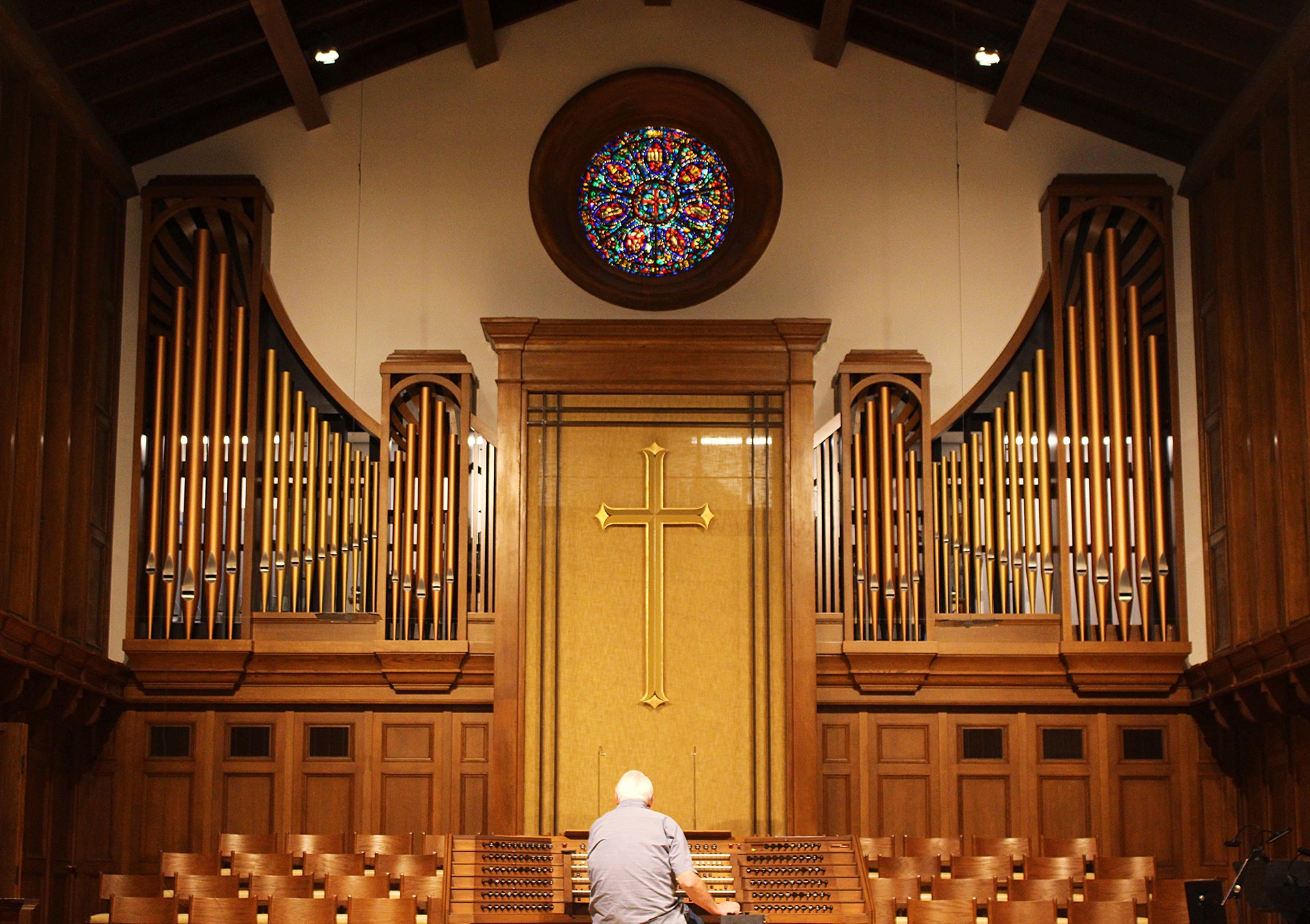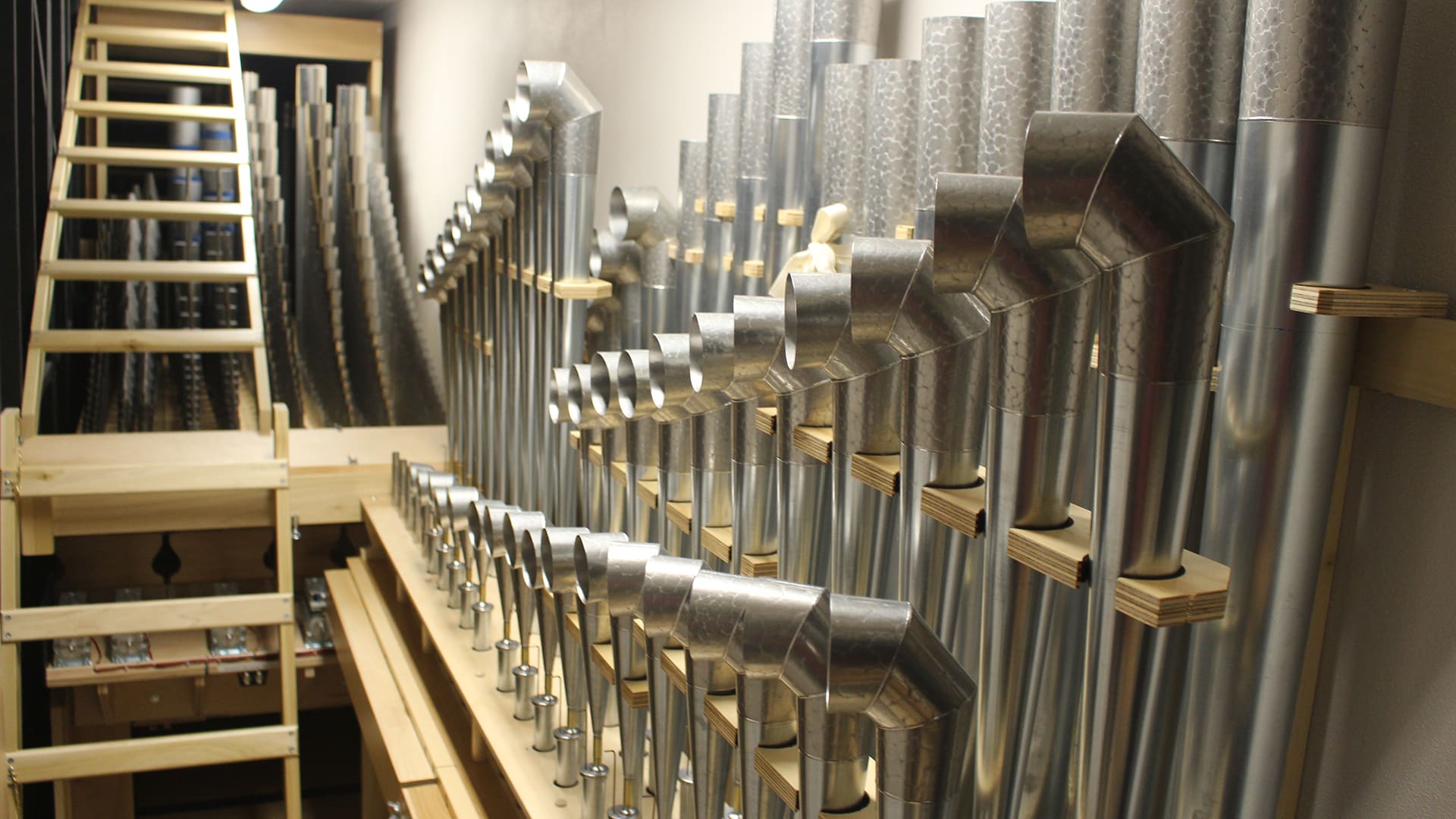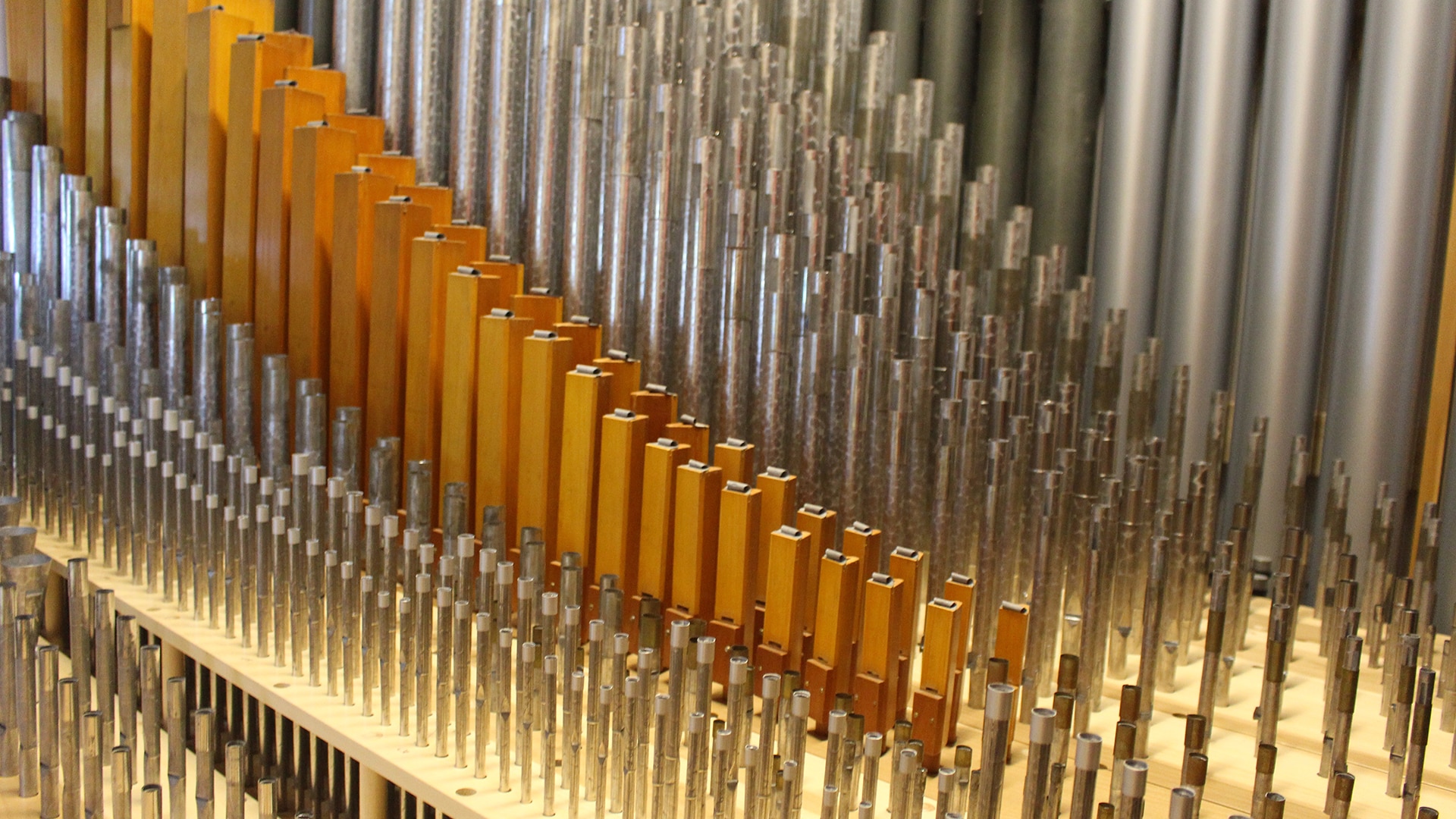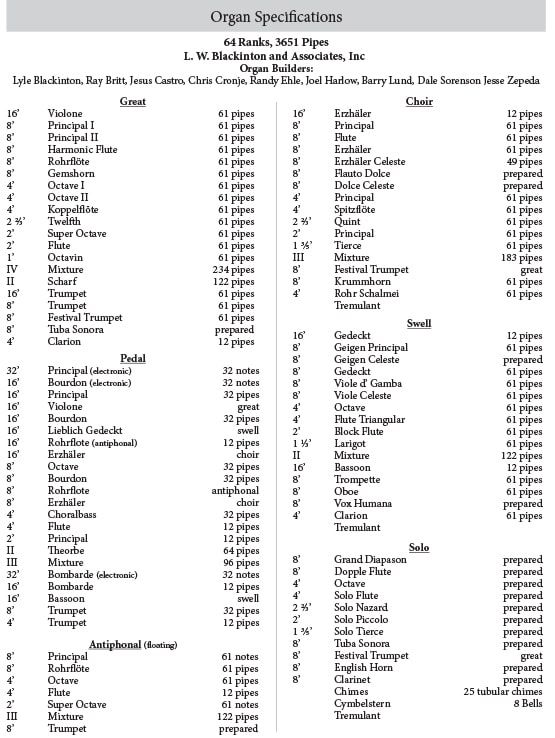Comments from the Organ Builder – Lyle Blackinton
 Only the finest of instruments should accompany the human voice in praise of God. He is the “King of Kings, the Lord of Lords.” It is fitting, therefore that we at La Jolla Presbyterian Church should dedicate an instrument to God’s Glory that is considered to be the “king of instruments.”
Only the finest of instruments should accompany the human voice in praise of God. He is the “King of Kings, the Lord of Lords.” It is fitting, therefore that we at La Jolla Presbyterian Church should dedicate an instrument to God’s Glory that is considered to be the “king of instruments.”
From the simple pipes played by the ancient shepherds, to the majestic pipe organs of today, we find chronicled the efforts of centuries to create the finest sounds in music. Generations of dedicated craftsmen have refined its structure and added new beauty to its chorus of voices.
In 1957 a Three Manual and Pedal, M.P. Möller pipe organ with 24 ranks was installed in the Church. It was placed in chambers on the south side of the chancel. During subsequent years, additional pipes were installed and a Four Manual Möller Console was introduced in 1976. Four ranks of Antiphonal pipes were also installed on the west wall.
 The genesis of this organ project actually began back in 1997 when problems were beginning appear in the air-powered console and with other parts of the organ mechanism.
The genesis of this organ project actually began back in 1997 when problems were beginning appear in the air-powered console and with other parts of the organ mechanism.
In 1998 it was decided to develop a Master Plan for the organ. This was done by L.W. Blackinton and Associates, in consultation with Bill Lullo. The first phase was the installation of a new low‐profile, all-electric console with stop controls adequate for the ultimate instrument. It was also equipped with a new solid-state multi‐level combination action.
There were increasing problems with existing chests containing the pipe valves and it was decided that these needed to be replaced, instead of repaired, in order to re-configure the layout of the organ for better speech. It was decided to delay this until the church was in a position to remodel the chancel.
During this extended period, there were many problems with dead notes, slow notes and stuck notes. Much of this went unnoticed by the congregation only because of the skill of organist Bill Lullo in his ability to play seamlessly around the problems.
 The original placement of the pipes in the south chamber meant that the organ always spoke at a disadvantage, as the sound was being projected at right angles to the majority of the congregation. New chambers were developed behind the east wall in a second-floor passageway that was seldom used. Over 1,300 pipes are now installed behind the new exposed façade pipes so that they speak directly toward the congregation, giving the organ’s character more clarity and presence.
The original placement of the pipes in the south chamber meant that the organ always spoke at a disadvantage, as the sound was being projected at right angles to the majority of the congregation. New chambers were developed behind the east wall in a second-floor passageway that was seldom used. Over 1,300 pipes are now installed behind the new exposed façade pipes so that they speak directly toward the congregation, giving the organ’s character more clarity and presence.
All of the visible façade pipes are “speaking pipes” and are from the stop known as the Theorbe, located in the Pedal division of the organ.
New chambers were also provided on the north side of the chancel for future installation of the Solo division.
Sixteen new ranks of pipes have been added to the organ, and all existing pipes were cleaned, revoiced, regulated and installed on new “Blackinton Electro‐Pneumatic Slider Chests”. The use of the existing pipes allowed the church to preserve the significant investment it has in some of these very large pipes.
The console is installed on a Blackinton air‐platform that allows it to be moved effortlessly around the chancel.
Currently the organ has 64 ranks (sets of pipes) and 3651 individual pipes.
These improvements have given us an instrument equally suited to accompany the human voice at worship, and the structuring of magnificent climaxes in the greatest of our church music. No instrument has been accorded greater skill from man, or used more in the worship of Christ the Savior. It alone is the unique instrument of Christian worship. Its purity of tone, first expressed in the ancient cathedrals of Europe, has called man apart from his world of impurity and lifted man’s spirit on wings of music to worship a God who demands honesty and purity of us.
 If you’re interested in the detailed specifications of the Organ, you can download the pdf here.
If you’re interested in the detailed specifications of the Organ, you can download the pdf here.
